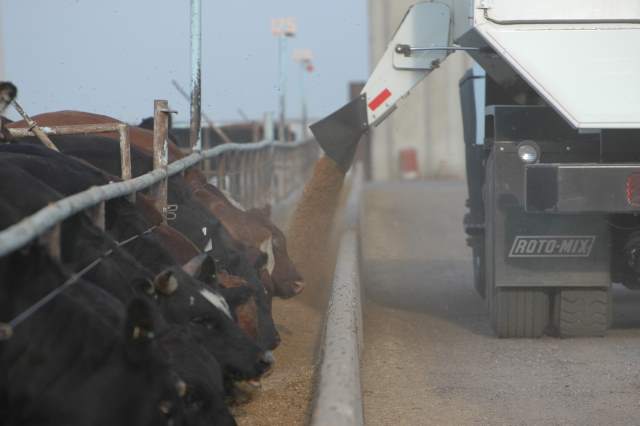September 9, 2014

If there’s one truism that always holds true in a commodity market, it’s that the cure for high prices is high prices. Inevitably, producers respond by overproducing, thus driving prices to unprofitably low levels.
Will that happen in the cattle market as producers respond to record-high calf and feeder prices that will lead to record high cash returns/cow for this year, 2015 and most likely even longer? It doesn’t have to. At least that’s one economist’s outlook.
“We’re probably not done with record prices,” Scott Brown, University of Missouri ag economist, told cattle feeders at a recent Feeding Quality Forum sponsored by Certified Angus Beef, Zoetis, Purina, Roto-Mix and Feedlot magazine. Brown, like just about everybody else in the industry, thinks we are going to grow cattle and beef supplies over the next 5-10 years. While he thinks that growth will be slow, it will occur and will ultimately change the price and profitability picture for producers.
Given that, here’s his question: “How do we prepare ourselves for 5-10 years down the road to be best equipped to survive?”
In short, Brown argues that focusing on producing quality beef— upper 2/3 Choice and Prime—is the ticket for all segments of the industry to remain profitable going forward.
Like any good economist, Brown dove head first into the numbers. And what he showed made some interesting points. The first is that, over time, more beef is graded Choice. While there is a definite seasonal pattern to the amount of Choice beef that is produced, with a peak typically in the spring, the trend line from 2008 through the first six months of 2014 is clear—from 2008 forward, each peak in the percentage of beef graded Choice was a little higher, starting around 62%-63% to now hitting 70% and higher.
At the same time, the percent of carcasses graded Select fell, which makes sense. However, the amount of Prime beef remained very steady, at around 3% to 4%.
Because the amount of Choice varies seasonally, the Choice-Select spread varies as well, sometimes running almost neck-and-neck and sometimes widening. “But we never have seen the spread between Prime and Choice or Select narrow much,” Brown says. “It’s been much more constant.”
When he looks in terms of dollars, he says Select has shown a fairly flat trend line when looking at percentage change year over year. Choice and Prime, on the other hand, have trended upward. “I’m more interested in hitting that market that is growing the most in wholesale value. For me, the Select market is not nearly as interesting as hitting Choice or Prime. That’s where the growth has been.”
That’s not to discount the role that Select beef plays in the marketplace. Somewhere around 60% of all the beef produced in the U.S. is consumed in the form of ground beef. So that market is important.
But Brown wonders what would happen to the cattle industry if it provided more supplies of a higher-quality product? The answer, he says, is that the higher-end beef would carve out its own place in the consumer market.
“Pork and chicken are better substitutes to that Select market than they are to Choice or Prime,” he says. What’s more, he argues that Select isn’t even a substitute for Choice and Prime within the beef segment.
Brown urges cattle producers to pay attention to those trends, because they show the way forward. “We’re getting the most growth in Prime and in branded products,” he says. “We’re actually seeing a negative trend in Select. If that continues, what do we need 10 years from now? More Prime product out there and less Select.”
He fully realizes that producing more upper Choice and Prime doesn’t come without a cost, both in terms of dollars and in terms of management. “But looking at the data, I recognize that cost is a lot less than I would have anticipated if I’m willing to invest in the genetics side of that herd to help me hit those quality targets,” he says.
The data he refers to are results from university-produced steers fed at a commercial feedyard in Kansas that show careful attention to genetics can not only produces cows that work on the ranch, but calves that work in the feedyard, in the packing plant and on the plate. “When I see 30% on average of those steer calves hitting Prime over the past few years, it tells me we can hit those targets; genetics can play a role in helping the industry as we build back,” he says.
Other BEEF stories to enjoy:
Want More Money For Your Calves? Superior Study Says Weaning & Preconditioning Pays
10 Ways To Have A Stress-Free Weaning Day
BEEF Exclusive: Herd Expansion? BEEF Readers Say Its Go Time
Corn Projected In $2.70 To $3.20/Bu. Range Through 2020
ENTER NOW! 2014 BEEF Efficiency & Profit Contest
You May Also Like



